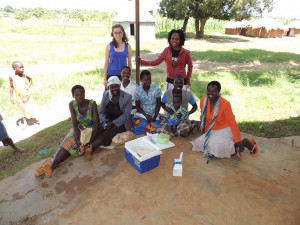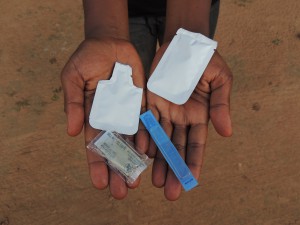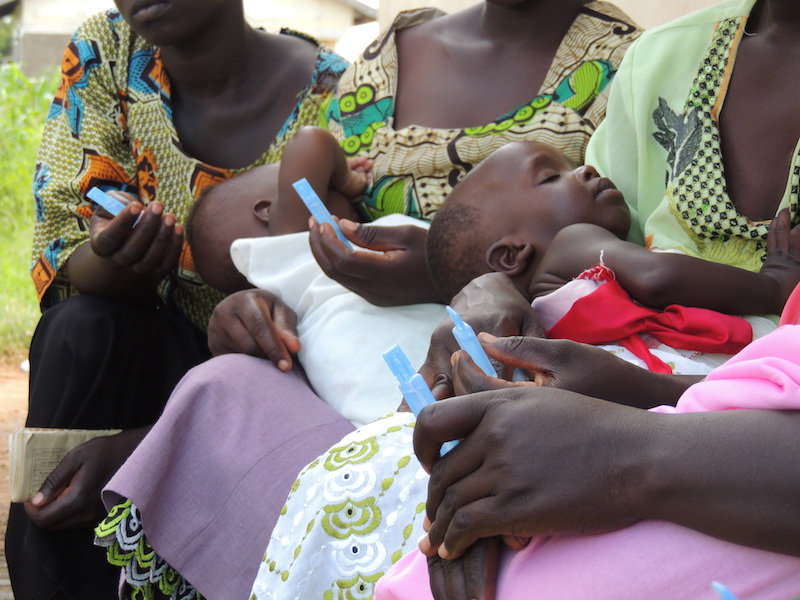Orianna DeMasi is a PhD student in the Department of Electrical Engineering and Computer Science at UC Berkeley, working in the ParLab. Orianna and her teammates Jennifer Chaussee and Emily Claymore, redesigned a zinc treatment strategy for the Clinton Health Access Initiative (CHAI).
 I never thought that diarrhea could teach a valuable lesson about design, but that is why one takes Eat.Think.Design – to have one’s mind bent around new and unexpected ideas.
I never thought that diarrhea could teach a valuable lesson about design, but that is why one takes Eat.Think.Design – to have one’s mind bent around new and unexpected ideas.
As a final project for Eat.Think.Design, my team was charged with finding short-term wins for getting rural mothers in developing regions to correctly administer treatment for diarrhea in 6-24 month old children. Diarrhea is dangerous; it’s the second most common cause of death for infants worldwide. There are myriad problems, but my team focused on giving zinc as a treatment. We wanted to redesign the product to remove barriers to adoption and encourage mothers to give it for the full 10 days of treatment. To do this, we borrowed the concept of convenience, which is held in utmost importance in the States, and tried to apply it for rural developing regions.
We developed a suite of products and I was bestowed the honor of taking our products for field tests with our target group in Uganda. I conducted fieldwork interviewing focus groups of 5-7 mothers with a local translator. Our focus groups began with a simple set of questions about how mothers typically treat diarrhea. We progressed to three tests: texture, taste, and packaging. The discussion ended with general feedback. It was slow process of talking, translating, writing, and shuffling Tupperware, but slowly recurring opinions bubbled up into clear signals.
Mothers really want the product in flavored, colored syrup. Further, more education of rural drug shop owners, not mothers or nurses, about zinc is needed. These results tell our partner CHAI (The Clinton Health Access Initiative) what products should be imported and where education campaigns should be focused.
The mothers hated my personal favorite packaging for zinc. “It looks like a condom, not children’s medicine.” “It’s too thick, like mucus.” This was a hard pill to swallow, but one the professors of Eat.Think.Design must relish. They coached us all semester on not letting personal bias cloud – keep the user at the center of the process.
While the fieldwork and watching babies devour my prototypes was a dream, the most valuable lesson came when I began traveling home. Quickly my condition deteriorated. Stomach cramps, a head cold, and then it hit – diarrhea. My appetite evaporated and as I vomited all the way across the Atlantic Ocean, I cogitated on the feedback from the mothers. Having the condition made everything clear – why they wanted syrup and not a thick substance.
 I had listened to the gospel of human centered design being preached all semester and the need to understand before acting. Getting diarrhea was the final note to this sermon. I hope the instructors consider getting the condition above and beyond the call of duty, but it did prove that you can’t get too close to a problem before you try to solve it.
I had listened to the gospel of human centered design being preached all semester and the need to understand before acting. Getting diarrhea was the final note to this sermon. I hope the instructors consider getting the condition above and beyond the call of duty, but it did prove that you can’t get too close to a problem before you try to solve it.
In conclusion, rural mothers want zinc in syrup, and I’m worried about my dream of working on Malaria – just how far would I go?

